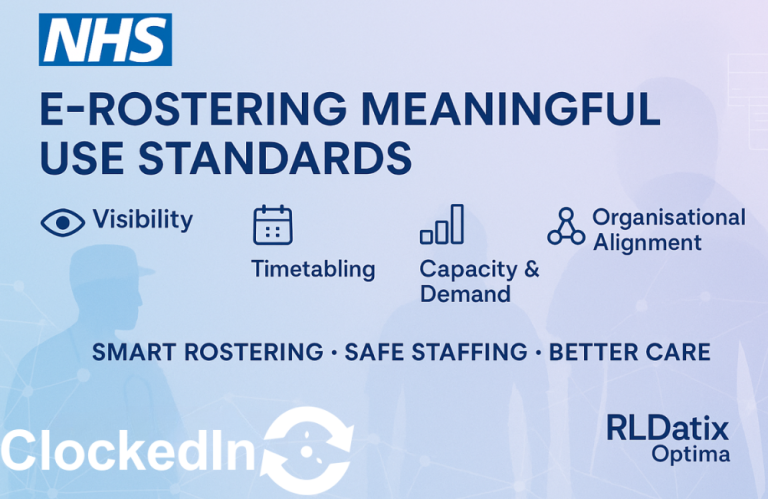In healthcare, every shift counts — and so does every decision behind it.
That’s why NHS England established the E-Rostering Meaningful Use Standards — a structured framework that ensures hospitals deploy their workforce efficiently, safely, and fairly.
What Is E-Rostering and Why Does It Matter?
E-rostering is more than just digital scheduling. It’s the foundation of a smarter, data-driven approach to workforce management — balancing patient demand, staff wellbeing, and organisational efficiency.
By digitising and connecting staff rosters across the NHS, trusts gain a real-time view of staffing levels, skills, and availability — enabling proactive management of shifts, reducing reliance on agency staff, and supporting patient safety.
The Four Levels of Attainment
NHS England’s model defines four progressive levels of e-rostering maturity:
Level 1 – Visibility: All staff are registered in the e-rostering system, ensuring paperless payroll and compliance with safe working hours.
Level 2 – Timetabling: Staff can access rosters remotely, set preferences, and view published shifts at least six weeks ahead.
Level 3 – Capacity & Demand: Teams align staffing capacity with patient demand using evidence-based tools and productivity metrics.
Level 4 – Organisational Alignment: E-rostering becomes a board-level accountability, integrated with budgeting, HR, and service objectives.
Each level builds toward full integration of workforce data — transforming rostering from a task into a strategic tool for decision-making.
Integrating ClockedIn and RLDatix Optima
Solutions like ClockedIn and RLDatix Optima directly support NHS trusts on this journey.
ClockedIn’s biometric and tablet-based timeclocks capture accurate attendance data and transfer it securely to Optima through AirStack middleware. This seamless connection enables:
Accurate time capture for all clinical staff
Live visibility of shift attendance and unfilled posts
Automated data flow for reporting and audit compliance
Reduced administrative burden and improved payroll accuracy
Together, ClockedIn + Optima help organisations move beyond Level 1 visibility — towards predictive, meaningful use of workforce data.
Building a Meaningful Workforce Future
The NHS Long Term Plan calls for all clinical staff to be managed via e-rostering systems. Reaching higher levels of attainment requires not just software, but a cultural commitment to transparency, equality, and continuous improvement.
With connected platforms like ClockedIn, healthcare providers can deliver on that promise — putting the right people, with the right skills, in the right place at the right time.
🔗 Learn more: clockedin.uk
🔗 Discover Optima: RLDatix – Time and Attendance, Simplified for Healthcare

